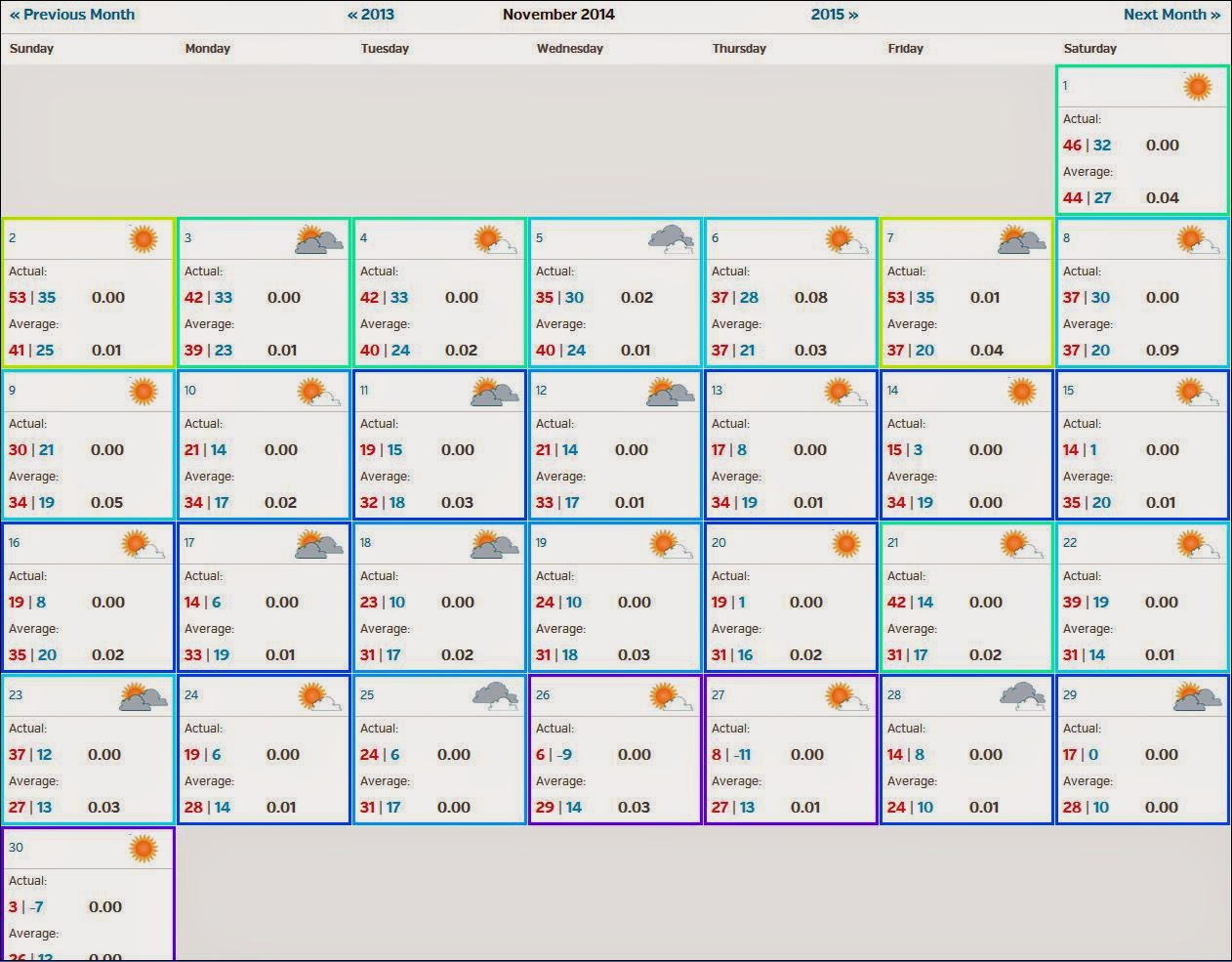Winter has finally showed its face, and with it comes projects and much needed service/maintenance. On the last day of putting our covers down we were welcomed with 3-4 in of snow that blanketed the entire course. But the snow melted in two days with temps in the 50's. Though I would of like to see it stick around, I did have some winterization tasks to complete first.
#8 Fairway
Back ridge of #8 green
I did have an inclination that I wasn't going to get all my snow fence done before it did snow in the beginning of November. Luckily I did spray all the greens and tees before the snowfall. The picture below was literally two days before it snowed when I was spraying with about 1 mi/hr winds at about 6 pm. I did manage to finish the greens just before dark. The tees on the other hand, were finished under the lights of the sprayer and the moon.
#3 green just before sunset
#18 green facing east
Since it did snow on the last day of covers. I did have to complete the last cover by myself after all the snow melted. The crew handled the wind and the covers like pros before the snow. We put all the covers but one down in about 12 hrs. But I think the last one took myself hour and a half to with no wind. So these guys were truly a huge help.
Before we put all the covers on we did manage to tackle some projects, and completed before mother nature furnace shut off. The weather around this area as much of the US went from 50 and 40 degree highs to below freezing and negative temps right around the second week of November.
We really only had one nice week to work without a jacket on.
#2 green and rough surround
It looks like we may have installed new irrigation around some tees and greens, but I decided that some areas needed to be root pruned. There were a couple tees and one green that were struggling this year. And after some consideration I decided to prune the areas where there are trees within 20 feet of critical playing surfaces. When the temps get pretty I high, and the humidity is pretty low. I found these are struggle the most.
Feeder roots within 6 feet of #2
The roots varied in size from the thin ones that are pretty prevalent here, to the thicker ones in the fore ground. I actually had to break out the ole hand saw to cut a couple that were around an inch thick. We then placed tar paper like a taco in the trench and back filled into the tar paper. Its pretty labor intensive trying to keep the paper in the right spot, but I'm sure it will be worth it in the end. In one location I have already noticed the difference. Thanks to the help of a Bobcat 650 with a trencher attachment and the crew we finished this job in just one day.
Flagpole area.
Shop wash pad
Drainage that flows away from the shop to prevent pooling and a mess in front of it.
The whole summer we had to wash off all the equipment in mud and old grass clippings. So I dedicated an area to wash of everything, and to build a chemical storage addition. The project really took more prep work then labor to pour the slab, I can truly say that this should of been done a LONG time ago. In all it took two days to pour and a couple days of prep including running a drain, landscaping, and framing. We also poured a pad in front of the flag poles to make a better transition to the main cart path.
Parking lot fence before cleaning
After cleaning
I also thought our two year old fence looked a little tired and in need of a touch up. I first though I could just stain the fence. That was a bad decision! I went and snatched the pressure washer from the shop. Blasted a layer of junk off the fence, and here is the result. Pretty night and day. I guess the stain wasn't included in the quote of the fence at the time it was erected. I then took the washer to the whole thing that same night. We came out the next day after it dried, and put a good coat of stain/sealer on to it.
The final project before greens covering was to pull off the cover on my newly seeded blue tee on 18. I seeded this tee back in the end of August. I threw a bunch of seed two ways with the Landpride overseeder, and spread some seed over the top with an application of fertilizer. I believe this picture was taken right before Halloween. With the completion of this tee the course is 100 percent grown in and ready for golf.
As this season closed I looked back and realized I have come a long way in gaining a knowledge how to truly run this course. With all the long hours and labor it has payed of with dividends. Now I am transitioning into winter projects to service all the equipment, and start some course accessory updates to increase playability/aesthetics of the course.

















































